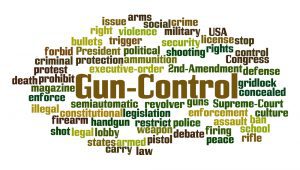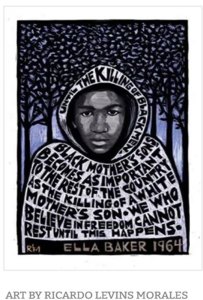“…This award [Nobel Peace Prize] …is a profound recognition…[of] the need for man to overcome oppression and violence without resorting to oppression and violence. Civilization and violence are antithetical concepts.”
—Dr. Martin Luther King, Jr. accepting the Nobel Peace Prize 1964
Hot Stove Issues, Monday Morning Wake-Up Call, Violence in America
As we at Suspicious Angels along with Americans everywhere ponder the meaning of the senseless violence in what we used to consider “safe spaces,” we watch with disbelief the eerily familiar specter of youngsters, some gunned down and the rest running for their lives from an American public school, this time at Stoneman Douglas High School in Florida last week. In 2012, we had the same sickening response when 20 children and 6 adults were gunned down at Sandy Hook elementary school in Newtown, CT. That’s only two of the 270 school shootings that have occurred since 2012 —18 in the first two months of 2018. No public gathering place is immune. At a Charlottesville Church, 9 were gunned down in in 2015 and in 2017, 26 met the same fate at a church in Sutherland Springs, Texas.
How do we make sense of America’s sorry history of murderous rage? The most obvious answer as these obscenities mount is the long history of America’s love affair with guns. Perhaps too many of Americans believe the propaganda of the National Rifle Association (NRA) that guns are “America’s birthright.” Our failure to act is astonishing. Except for a decade between 1994 and 2004 when Congress got its act together and banned certain types of automatic weapons, legislators have blocked even the mildest reform measures for fear that a small but vocal voting block would punish them at the polls for “conspiring” to “take their guns away.” Although most gun safety experts downplayed the effect of the 1994 bill on gun violence, the NRA was willing to spend millions in lobbying and campaign donations to block its reauthorization in 2004.
One step forward, two steps backward — that’s the fate of most gun-control legislation. Prior to the 1994 ban on semi-automatic assault weapons, other equally tepid attempts at gun control occurred — among them the 1989 bill the George H.W. Bush administration supported that banned the importation of foreign-made automatic rifles but allowed domestic gun makers to manufacture and sell rifles of similar potency. Twenty years before, in 1968 as a response to the assassinations of President Kennedy (1963) Martin Luther King and Bobby Kennedy (both in 1968) the Gun Control Act of 1968 was passed in an effort to regulate the firearms industry and firearms owners.
Here’s President Johnson (in his last year in office) in an oddly prophetic moment— “…this bill…falls short. I asked for the national registration of all guns and the licensing of those who carry those guns…there are over 160 million guns in the country —more firearms than families … [50 years later more than 300 million guns are in circulation in the U.S.— almost one for every man, woman and child] …The voices that blocked these safeguards were not the voices of an aroused nation [but] the voices of a…gun lobby.” As if to prove Johnson right, the gun lobby thought the bill was dandy. Here’s the NRA’s reaction “the measure as a whole appears to be one that the sportsmen (NRA euphemism for gun owners) of America can live with.”
It took Prohibition, Al Capone, John Dillinger, Bugsy Malone and an assortment of murderous thugs to get the first federal gun-control law passed in 1934. The National Firearms Act of 1934, part of FDR’s “new deal on crime,” levied a $200 fine on the manufacture or sale of machine guns and sawed-off shotguns and provided for a national registry to record all sales. Like most gun-control legislation then and since, two things doomed the bill—lack of enforcement and lukewarm public support.
Federal “gun control” legislation since, with few exceptions, has been anything but, taking the form of paybacks from a grateful congress and executive branch (both republican and democratic) to the campaign contributions of the rich and powerful gun lobby. Even the Supreme Court, in its role of final arbite of “justice” has proven to be no match for a gun lobby whose tentacles reach every corner of the federal bureaucracy. Joining their hapless peers in Congress and the Executive branch, in 2008 the Supreme Court in a 5-4 decision (with precedent implications) declared unconstitutional a DC law banning handguns on second amendment grounds [“A well-regulated Militia, being necessary to the security of a free State, the right of the people to keep and bear Arms, shall not be infringed]. (District of Columbia v. Heller)
Paraphrasing the NRA, violence is “America’s true birthright” starting with the first settlers to the New World (new to them, not to its inhabitants). The U.S. has never hesitated to use violent oppression to satisfy imperial dreams. By some estimates, nine million native Americans were murdered by generations of settlers. In 1787, as the issue of slavery became a major deal breaker at the Constitutional Convention, the founding fathers saw a way out in a “compromise” that avoided condemning the “peculiar institution” and instead stipulated that enslaved blacks in a state would be counted as three-fifths of the number of white inhabitants for the purposes of representation in Congress.
As the 20th century was nearing its midpoint, the deadly hypocrisy of U.S. leaders continued. President Roosevelt in in his State of the Union message in January, 1941, singled out four freedoms as basic American values — freedom of speech, of worship, freedom from fear and hunger. It didn’t take long for the bloom to come off that particular rose. A year later, FDR issued Executive Order 9066 consigning 110,000 Japanese Americans (62% of them American citizens) to U.S. concentration camps for the duration of the war.
The notion that perpetual war will somehow bring long-lasting peace is a peculiarly American and often recurring form of doublespeak (saying one thing and meaning the opposite) that permeates the entire national surveillance empire (note the USA Freedom Act, which is anything but, Obama’s parting gift to the neocons extending three expiring surveillance provisions of the 9/11 Patriotic Act). The history of U.S. foreign policy since 1945 has been a series of U.S-inspired wars conducted with much fanfare usually against less powerful nations —Korea in the fifties, Vietnam in the sixties and tiny Grenada {population 91,000) in the eighties. Yugoslavia was the target in the nineties, and a collection of Mideast nations starting with Iraq and Afghanistan did the honors in the twenty first century. The endings of these conflicts have an eerie similarity as each war becomes the staging ground for another usually more fearsome and destructive war. Not surprisingly domestic unrest has followed the same trajectory.
As the carnage mounts in U.S. schools, churches and public venues, we must face the music —foreign wars rather than keeping us safe have made us less safe right here in our own country. Perpetual war has created a whole new set of values. The four freedoms out the window replaced by new values — curtailment and outright abandonment of free speech rights, militarized policing, crack down on public protest, highest per capita incarceration rate in the world and income inequality
The essential contradiction of making war and expecting it to result in peace is incomprehensible to present day leaders. Fifty years ago, Dr. King put his finger on it.
“As I have walked among [the angry young people] I have told them that Molotov cocktails and rifles would not solve their problem. I have tried to offer them compassion… while maintaining my conviction that social change comes…through non-violent action…But they ask if our own nation wasn’t using massive doses of violence to solve its problems, to bring about the changes it wanted…”
—Dr. Martin Luther King, “A Time to Break the Silence” April 4, 1967
Violence abroad isn’t the only driver of our current domestic malaise. Growing income inequality is a major cause of the frustration and hopelessness that millions of Americans feel every day of their lives. According to the U.S. Census Bureau, in 2016, in the wealthiest country in the world, 42 million Americans (13% of the population) were “food insecure” (bureaucratic euphemism for starving to death), 40.6 million people lived below the poverty line (12.7% of the population). But wait, the Census Bureau was quick to point out —that’s 2.5 million fewer poor Americans than in 2015. Progress, anyone?
In 1968 a Buddhist leader in Vietnam observed, “The image of America will never again be of…freedom and democracy but the image of violence and militarism.” America itself is now feeling the effects of that reversal.
“There is nothing …to prevent us from reordering our priorities so that the pursuit of peace will take precedence over the pursuit of war.” The quest is for a new generation of leaders as committed to peace as the present generation is to war. “If we make the right choice, we will be able to transform the jangling discords of history into a beautiful symphony of brotherhood.” If we don’t? “We shall surely be dragged down the long, dark, and shameful corridors of time reserved for those who possess power without compassion, might without morality, and strength without sight.” (Quotes from “A Time to Break the Silence” April 4, 1967)
The power is ours and last year, helped along by social media, the populace started to find its voice. The day after the Inauguration of President Trump, hundreds of thousands, a crowd estimated to be larger than attended the Inauguration assembled for a Women’s March down Pennsylvania Avenue. Not just to protest this particular president but to express their distaste for his pledge to “make America great again.” Several weeks later thousands showed up at Kennedy Airport to protest Trump’s Muslim ban. That was followed by a gathering in Boston to hear Bernie Sanders and Elizabeth Warren. Next up a demonstration in Washington to protest cuts in funding for scientific experimentation, followed by a march against environmental degradation. Think of it as a portion of the population determined to raise their voice in service of change.
Wait, there’s more. For the first time, an aroused populace led by students took to the streets after the latest school shooting to demand the imposition of strict gun laws. On March 24, they plan to follow it up with a march in Washington. For the first time in over a decade, activism is replacing inertia. That’s how it starts. Oligarchy and plutocracy are already feeling the hot breath of change at their heels. A peaceful, climate-friendly world is within our reach:
For we cannot tarry here,
We must march my darlings. We must bear the brunt of danger
We, the youthful sinewy races, all the rest on us depend, Pioneers! O Pioneers!
(Walt Whitman “Pioneers! O Pioneers” from Leaves of Grass)
SUBSCRIBE AND DONATE TO RISE UP TIMES
Truth is not fake news.
Justice is not fake news.Rise Up Times needs your help to bring you timely articles and information about so many important current issues in these Rise Up Times. Subscribe to RiseUpTimes.org Support independent media. Please donate today and share articles widely.
The contents of Rise Up Times do not necessarily reflect the views of the editor.
2 Comments
Comments are closed.




[…] Violence Begets Violence: America’s Wars Come Home — Rise Up Times […]
[…] Violence Begets Violence: America’s Wars Come Home — Rise Up Times […]